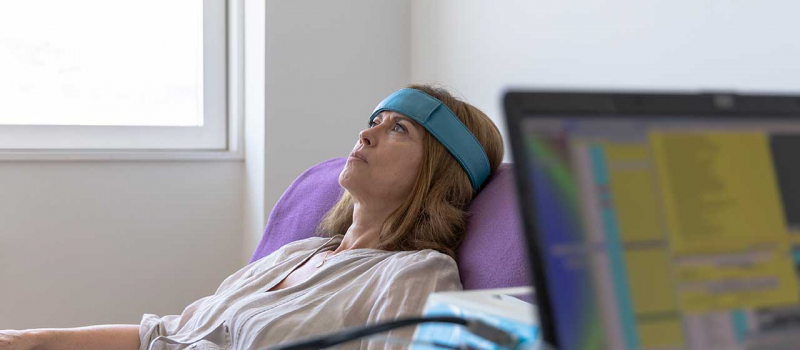The term “biofeedback” refers to a real-time physiological mirror. The term was first coined in 1969, borrowing the feedback concept stemming from cybernetics during World War II.1 The development of biofeedback instruments represents an effort to apply modern technology to psychiatry. Nowadays, biofeedback therapy is used to help patients undergoing medical detox or addiction treatment to learn how to control their responses to stressors.
Definition of Biofeedback
So, what is biofeedback therapy? Biofeedback can be defined as a treatment method used to facilitate self-regulation of bodily processes or reactions.1 Biofeedback techniques are used to help people with substance use disorders gain control over their minds and bodies during drug or alcohol treatment.
During biofeedback, electronic sensors are placed on the client’s skin. These sensors are wired to a special biofeedback machine or device, which gives medical professionals “feedback” or a preview of the patient’s “bio” signs, hence the name.
Biofeedback devices exude information to clients via pulsing sounds, images, or flashes of light. The way patients respond to these stimuli shows them how they can learn relaxation exercises to control how their body responds to stressors like withdrawals and cravings.
How Biofeedback for Addiction Works
Biofeedback can help people in recovery understand involuntary functions and reactions. Medical professionals use the information they receive from biofeedback devices to create a tailor-made plan for patients.
This form of therapy is centered on identifying and managing emotional and physical reactions to stressors. Functions like anxiety, nervousness, tension, or severe emotional distress make us more anxious or upset and make relaxation more difficult to achieve. Biofeedback therapy tracks these reactions and the body’s unconscious reaction to physical and emotional tension.
Biofeedback therapy focuses on physiological functions like:
- Breathing
- Heart rate
- Muscle contraction
- Skin temperature
- Blood pressure
- Sweating
This therapy technique is most beneficial to people in addiction recovery who are in detox programs. Alcohol and drug withdrawals often lead to physical stress and heightened involuntary responses, such as muscle contraction and twitching. In addition to administering medication according to the patient’s symptoms, our biofeedback therapists also work with patients to help them control their responses naturally.
Biofeedback machines utilized at our Pennsylvania drug rehab record bodily functions and display them back to the patient and our therapists. For instance, the client’s heart rate might be displayed as a pulsing light or image on a computer screen.
If the light is pulsing quickly, the client knows that they need to use stress-relieving techniques to lower their heart rate, such as belly breaths. The pulsing light or image on the screen will slow down as their heart rate slows down.
Our Biofeedback Therapy for Addiction in Pennsylvania
Trained and licensed biofeedback therapists administer this treatment with specialized equipment. Onsite therapy sessions usually last around 30 minutes to an hour, depending on the person’s program and symptoms. Someone with a short-term addiction or who’s already undergone other levels of addiction treatment might only require 10 biofeedback sessions rather than 50.
Biofeedback therapy is also noninvasive, and those who have experienced negative reactions to medication-assisted treatment (MAT) might find that biofeedback is a more effective alternative. Biofeedback therapy is also a beneficial and common form of therapy used in rehab for pregnant women since it’s a medication-free treatment.
If you or someone you care about is struggling with drug or alcohol abuse, don’t wait to get help. Our therapists and addiction specialists have had the honor of helping patients achieve sobriety for the past 45 years, and we can help you, too.
Contact Clearbrook Treatment Center today to learn how to get started with our addiction treatment in Pennsylvania.
Not all programs are available at all locations. Please contact the location for availability.
Source:
- National Library of Medicine – Biofeedback in Medical Practice
Related Reading:




